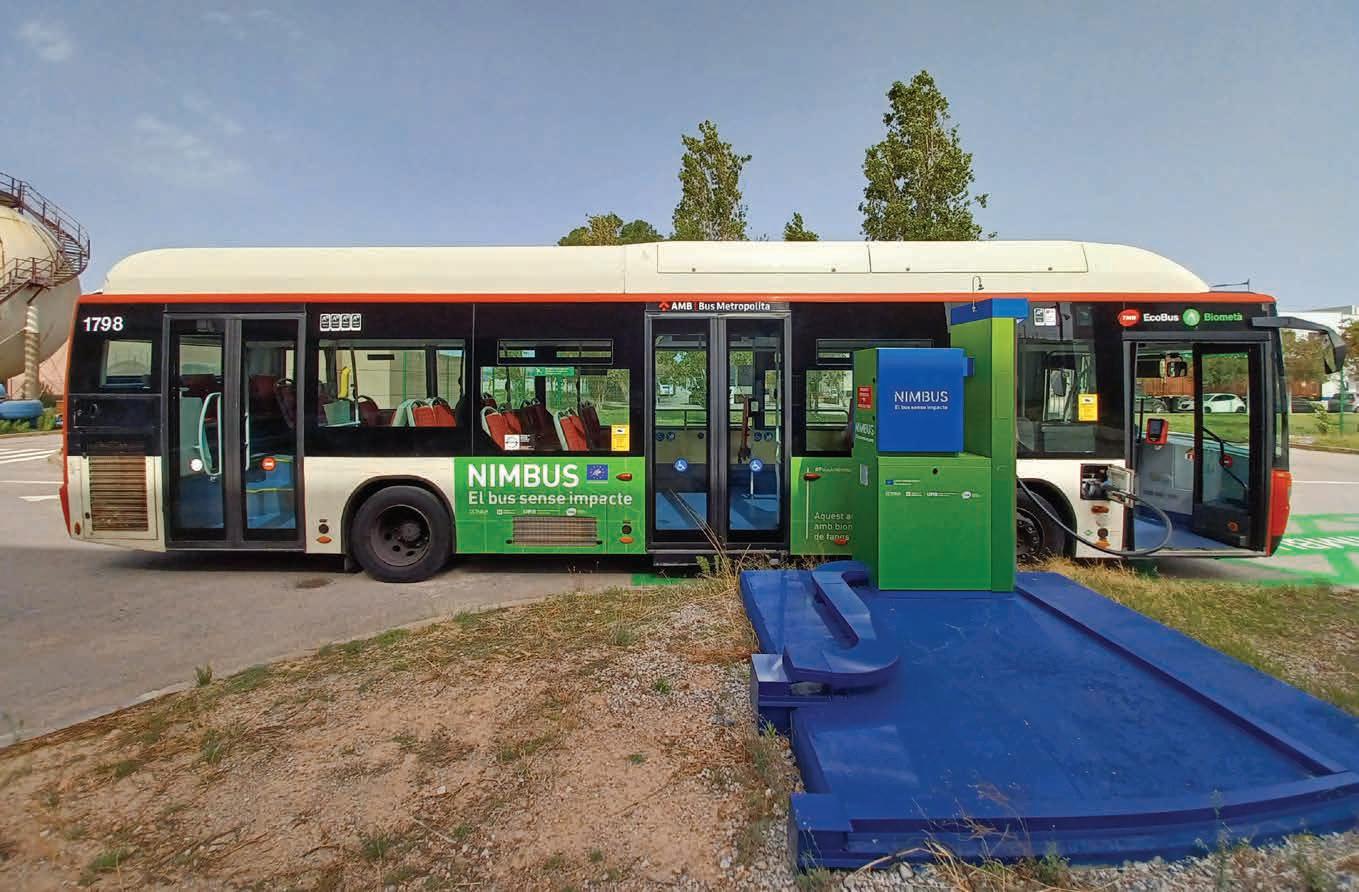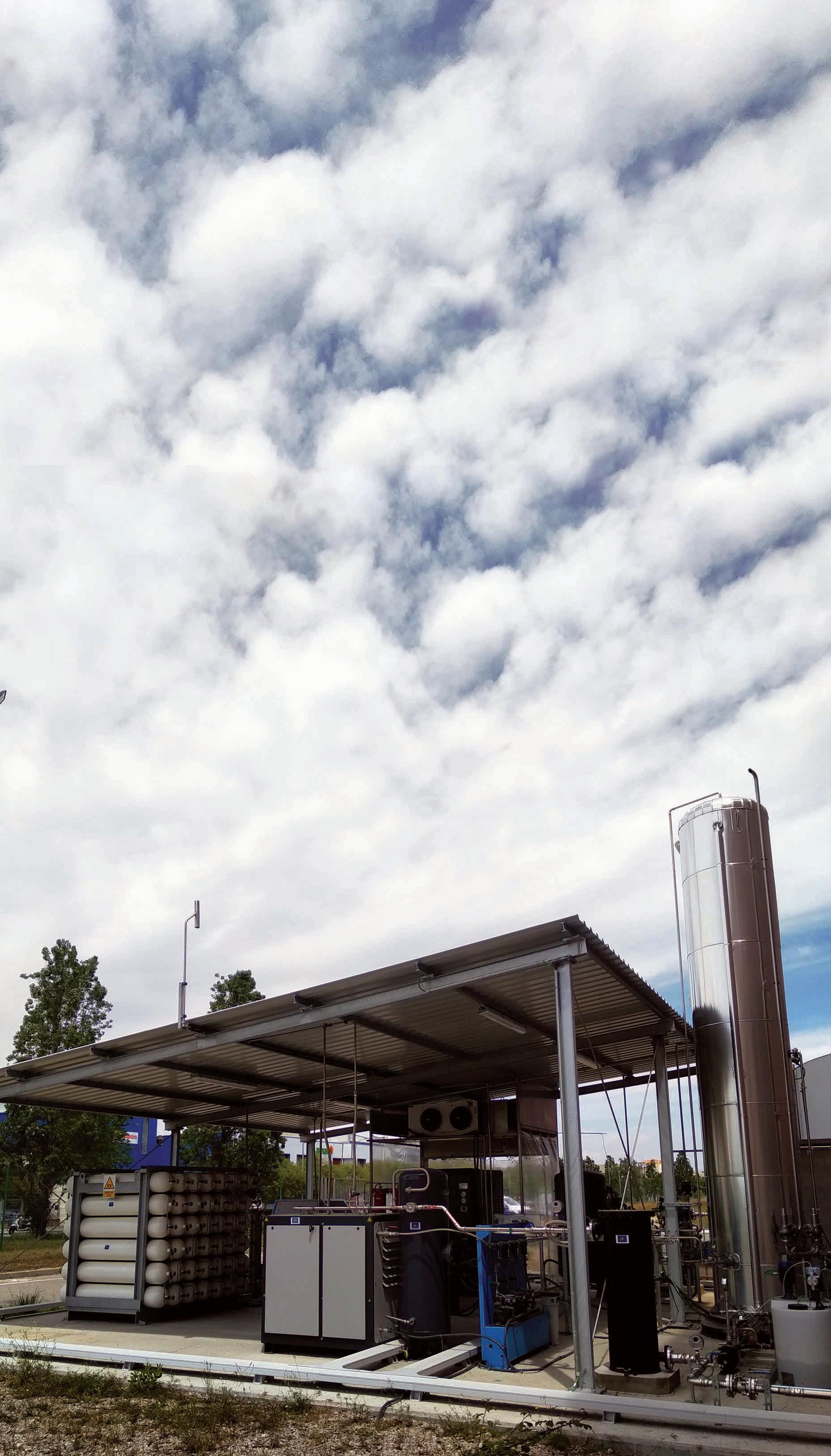LIFE NIMBUS: From Wastewater to Green Fuel

Turning wastewater into biomethane for city buses, the LIFE NIMBUS project is paving the way for circular-economy innovations. In conversation with Dr. Alessandro Solimeno, Researcher and Project Manager at Cetaqua-Water Technology Centre we discover how this Barcelona-based initiative not only slashes emissions but also showcases a practical model for greener, more efficient urban transport.
Cities worldwide face mounting pressure to reduce their carbon footprints, and Barcelona is no exception. Urban areas contribute significantly to greenhouse gas emissions, with transport alone accounting for nearly a quarter of Europe’s total CO2 output. Traditional city buses running on compressed natural gas (CNG-fossil-based methane compressed at high pressure—and diesel have long been considered transitional solutions. While these fuels offer some improvements by reducing particulate emissions compared to older diesel models, they still release greenhouse gases, primarily carbon dioxide (CO2), contributing directly to climate change.
Enter LIFE NIMBUS: a pioneering project co-funded by the European Union’s LIFE Programme, designed to leverage power-togas technology and biomethanation, turning an overlooked resource - sewage sludge from wastewater treatment - into a clean, renewable bus fuel. Led by Cetaqua-Water Technology Centre and carried out in collaboration with key local partners including Aigües de Barcelona, Transports Metropolitans de Barcelona (TMB), and the Universitat
Autònoma de Barcelona (UAB), LIFE NIMBUS enhances the circular economy model by converting waste into valuable resources. “The NIMBUS project enhances the circular model between the wastewater treatment plant and the city,” explains Dr. Alessandro Solimeno, “using biogenic carbon and surplus renewable energy to convert hydrogen and biogas into biomethane.” By capitalizing on waste that cities naturally produce, the project not only mitigates emissions but exemplifies a practical circular-economy solution that can seamlessly integrate into existing urban transport systems.
Key Innovation: Power-to-Gas
LIFE NIMBUS’s pilot site is placed at the Baix Llobregat wastewater treatment plant, where sewage sludge is digested anaerobically to produce biogas. Traditionally, biogas could be burned onsite for heat and power. However, this project adds a new layer: combining CO2 of biogas with green hydrogen (using excess electricity to split water into hydrogen and

oxygen by means of electrolysis) to generate biomethane through a specific group of microorganisms called hydrogenotrophic methanogenic archaea - a process often referred to as power-to-gas.
According to Dr. Solimeno, “It’s not yet an entirely robust industrial-scale technology,” but the project has successfully demonstrated biomethanation in a real setting. By using excess renewable energy (such as wind or
addressing for future scale-up. “We’ve learned valuable lessons from the pilot,” says Dr. Solimeno, “and these insights are helping us refine our processes to ensure the bus can run hundreds of kilometers on biomethane as we move forward.” This continuous learning approach positions LIFE NIMBUS strongly for wider adoption and greater impact.
“We proved that wastewater could be turned into biomethane to power a bus. Now we know what works, what doesn’t, and how to push this forward on a bigger scale.”
solar) for electrolysis, the approach stores surplus electricity chemically in the form of biomethane, ready to fuel a bus.
Overcoming Technical Hurdles
Innovative projects such as LIFE NIMBUS naturally involve exploring new territory. The project’s goal of biomethane production with the characteristics required for efficient bus refueling presented the team with opportunities to optimize their approach. With proactive adjustments and ongoing upgrades, the NIMBUS team successfully identified key areas for improvement - such as temperature regulation and reactor configuration - which they are now
Real-World Operation: A Pilot Bus in Barcelona
One of LIFE NIMBUS’s defining features is the direct integration of its biomethane into a public bus belonging to Transports Metropolitans de Barcelona (TMB).
Although the pilot phase revealed practical mechanical and technical bottlenecks: “In the current state, operating in continuous mode at 1.5 Nm³/h, the NIMBUS system produces around 22 kg of biomethane per day, which is equivalent to approximately one-third of the bus’s fuel tank.”
Despite these hurdles, the pilot offers a clear glimpse into the potential for largerscale deployment. “If we used all the biogas produced by the Baix Llobregat plant, we
could refuel up to 81 buses a day, each traveling around 100 kilometers,” notes Dr. Solimeno. Though on-site capacity at the pilot scale remains limited, this scenario highlights the significant impact biomethane could have if rolled out more broadly. The team has also gathered valuable operational data on controlling factors like pH, temperature, and overall reactor stability - crucial elements for scaling up to an industrial level. “Controlling temperature, pH and liquid distribution evenly throughout the reactor helps us boost productivity and reliability,” says Dr. Solimeno. “Every obstacle we’ve faced has taught us how to optimize the process further.”
Collaboration & Wider Applications
Co-funded by the LIFE Programme, the consortium behind LIFE NIMBUS unites water technology experts at Cetaqua-Water Technology Centre, the water operator of the Barcelona metropolitan area, Aigües de Barcelona, the public transport operator of Barcelona, TMB, and research partners like (UAB). Collaboration has been essential in navigating regulatory frameworks, public transport logistics, and the engineering feats required to store and utilize biomethane.
While Barcelona’s current renewableenergy surplus may be limited, Dr. Solimeno highlights that countries with ample wind power (e.g., Denmark, Germany, Ireland) or abundant biogas infrastructure stand to benefit even more from power-to-gas. By injecting biomethane into existing natural gas grids, these regions could effectively store and transport renewable energy, further integrating it into the circular economy.
Towards Commercial Reality
Perhaps one of the most promising aspects of LIFE NIMBUS is its potential for scale.
Though the pilot project shows real promise, there’s a clear need for more robust industrial solutions - including bigger plants, improved reactor configuration, and better temperature and pH control in the reactors. Dr. Solimeno also points to a bioelectrochemical system developed by UAB, which could generate hydrogen from wastewater with a lower energy demand.
“It’s still a lower-TRL technology - meaning it’s at an early stage of development, so additional testing and scaling are needed before wide commercialization - but if industrial development lowers costs, it could make biomethanation even more efficient.”
Next Steps & Lasting Impact
With LIFE NIMBUS entering its final phase, the team is preparing business models, replication studies, and Life Cycle Assessments to map out future opportunities. A closing event in June will bring stakeholders together to discuss results, remaining hurdles, and the path to commercialization. Despite the early challenges, the project stands as a real-world testament to circular-economy principles.
“We’re hoping to demonstrate clearly,” Dr. Solimeno says, “that biomethane derived from wastewater can be scaled up into a viable, cost-effective solution for public transport.” By turning sewage sludge into a meaningful energy resource, LIFE NIMBUS exemplifies how innovative thinking, cross-sector collaboration, and on-the-ground testing can create a cleaner, more sustainable urban future.

LIFE NIMBUS
Non-IMpact BUS: Demonstration of a biological methanation plant for sustainable urban transport
Project Objectives
The LIFE NIMBUS project promotes a circular model between wastewater treatment plants (WWTP) and cities. It focuses on valorising biogenic carbon and excess energy to produce biofuel, powering a public bus in Barcelona. By demonstrating power-to-gas technology, it aims to support renewable energy use and decarbonise the transport sector.
Project Funding
LIFE Nimbus is a European project cofunded by the LIFE Programme (LIFE19 ENV/ES/000191), the European Union’s funding instrument for the environment and climate action.
Project Partners
Consortium members: Cetaqua-Water Technology Centre (leaders), Aigües de Barcelona, Transports Metropolitans de Barcelona, Universitat Autònoma de Barcelona
Contact Details
Alessandro Solimeno
Project Manager and Researcher Cetaqua Barcelona Crta. Esplugues, 75 08940 Cornellà de Llobregat T: +34 933 12 48 00 E: alessandro.solimeno@cetaqua.com W: https://www.life-nimbus.eu/

Solimeno is Project Manager at Cetaqua-Water Technology Centre, working in the Zero Waste and Decarbonisation Area. He holds a Ph.D. in Environmental Engineering from UPC (Spain) and has expertise in microalgae treatment, circular economy, and sustainable energy solutions, focusing on biogas, biomethane, and hydrogen.


